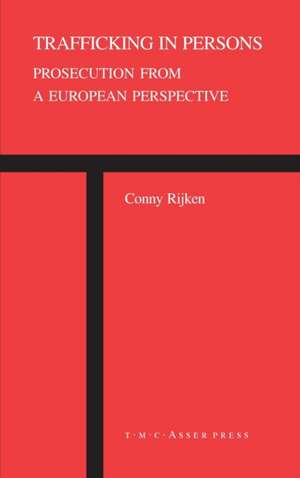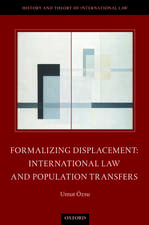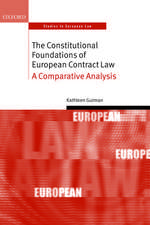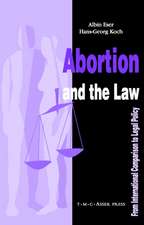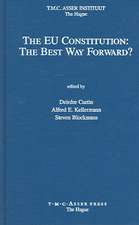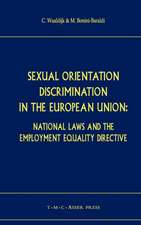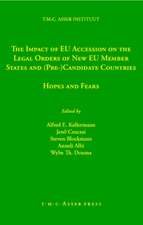Trafficking in Persons: Prosecution from a European Perspective
Autor Conny Rijkenen Limba Engleză Hardback – 7 noi 2003
Preț: 399.29 lei
Nou
Puncte Express: 599
Preț estimativ în valută:
76.40€ • 79.99$ • 63.22£
76.40€ • 79.99$ • 63.22£
Carte tipărită la comandă
Livrare economică 05-19 aprilie
Preluare comenzi: 021 569.72.76
Specificații
ISBN-13: 9789067041676
ISBN-10: 906704167X
Pagini: 345
Ilustrații: 345 p.
Greutate: 0.68 kg
Ediția:1st Edition.
Editura: T.M.C. Asser Press
Colecția T.M.C. Asser Press
Locul publicării:The Hague, Germany
ISBN-10: 906704167X
Pagini: 345
Ilustrații: 345 p.
Greutate: 0.68 kg
Ediția:1st Edition.
Editura: T.M.C. Asser Press
Colecția T.M.C. Asser Press
Locul publicării:The Hague, Germany
Public țintă
ResearchCuprins
Preface; Acknowledgements; Abbreviations; Part I. Introduction: Research Question and Aim of the Study: 1.1 Introduction; 1.2 Relevant developments in the process of globalisation; 1.3 The effects of globalisation on the crime of trafficking in persons; 1.4 Research question; 1.5 Aim of the study; 1.6 Structure of the study; Part II. Transnational Crime and International Criminal Law: 2.1 Introduction; 2.2 The nature of international criminal law; 2.3 The traditional categorisation of international criminal law; 2.4 Other subdivisions relating to the traditional one; 2.5 Transnational crime as a third group of crimes?; 2.6 Conclusion; Part III. Defining Trafficking in Persons; 3.1 Introduction; 3.2 History of the term 'trafficking in persons'; 3.3 Elements of the definition of trafficking in persons; 3.4 Use of definitions of trafficking in persons by the UN, the EU, and the IOM; 3.5 Trafficking in persons versus smuggling persons; 3.6 Relation of trafficking in persons to slavery and slavery-like practices; 3.7 Trends and scope of the phenomenon; 3.8 The relation of trafficking in persons to organised crime; 3.9 The use of the term 'trafficking in persons' in this study; 3.10 Is trafficking in persons a transnational crime?; 3.11 Conclusion; Part IV. European Policy Documents to Combat and Legal Instruments to Prosecute Trafficking in Persons; 4.1 Introduction; 4.2 Overview of policy documents; 4.3 Overview of the legal instruments; 4.4 Conclusion; Part V. The Effectiveness of Policy Documents to Combat Trafficking in Persons and Legal Instruments to Prosecute this Practice; 5.1 Introduction; 5.2 General remarks on the effectiveness of the policy documents and legal instruments to combat and prosecute trafficking in persons; 5.3 Obstacles to the application of legal instruments indicated in legal literature; 5.4 Obstacles to the application of legal instruments on mutual legal assistance in the EU; 5.5 Conclusion; Part VI. Obstacles to the Application of Legal Instruments to Prosecute Trafficking in Persons in the Netherlands; 6.1 Introduction; 6.2 Method of research; 6.3 Problems indicated in the preliminary interviews; 6.4 Results of the analysis of the files; 6.5 Conclusions; Part VII. Conclusions: 7.1 Summary; 7.2 Suggestions to improve the prosecution of trafficking in persons; 7.3 Final conclusion on this study; Appendices; Bibliography; List of treaties, documents, and cases; Index.
